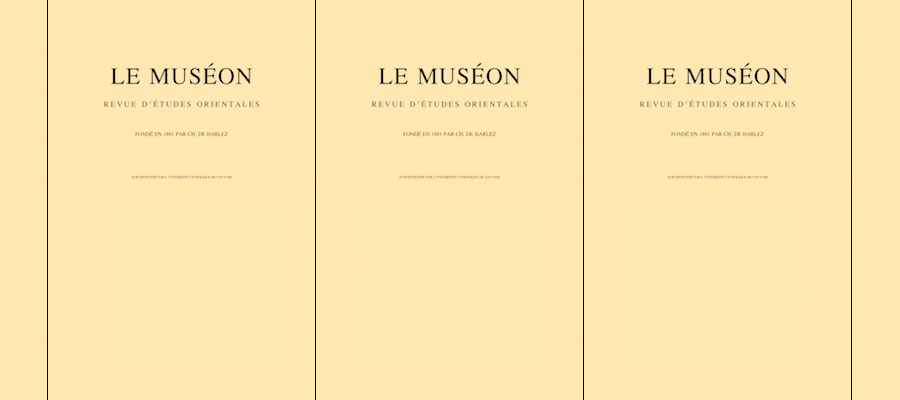Le Muséon, volume 131, issue 1–2 (2018).
CONTENTS INCLUDE
A Circle of Egyptian Bishops at the End of Roman Rule (c. 600): Texts and Contexts
Phil Booth
This article explores the explosion of evidence which occurs around the creation of the Severan episcopate in Egypt. Drawing together a number of modern studies, it first sets out the known careers and corpora of the patriarch Damian of Alexandria (577-c. 606) and several of his prominent bishops: John of Paralos, Constantine of Assiut, Rufus of Shotep, John of Hermopolis, Pesynthius of Koptos, and Abraham of Hermonthis. It then argues that, even if their output contributed to a process of heightened provincialisation in this period, the most immediate and important context for appreciating that output is not a grand political or cultural separatism, but the bishops’ need both to legitimise and to distinguish their new Church in the face of Chalcedonian competition.
An Armenian Dialogue Written in Greek Script in the Margins of Manuscript Moscow, GIM, Synod. Gr. 156
Jost Gippert and Caroline Macé
The margins of f. 221v-223v of the 11th-c. manuscript Moscow, GIM, Sinod. gr. 156 (Vladimir 369) contain notes written in Armenian language copied in Greek script. Those marginal notes are a translation into Armenian of parts of the Greek text (Passio metaphrastica S. Eustratii et al. soc. mm. BHG 646) appearing on the same folios, consisting of the speech uttered by Mardarios, an Armenian who decided to become a martyr together with Eustratius. After an introduction about the Moscow manuscript and about the tradition of the Passio S. Eustratii, the article provides a first edition of these marginalia datable to the end of the 12th c., together with a transcription into the Armenian alphabet and some philological and linguistic comments. In conclusion we offer some insights about the cultural context of the translation.
The Armenian Questions of St. Gregory: A Text Descended from 4 Ezra: Edition of Recension I
Michael E. Stone
Here I present an edition and translation of the oldest copy available of Questions of St. Gregory and the Answers of the Archangel Concerning the Souls of Men (QuestGreg) from manuscript J1293 in the collection of the Armenian Patriarchate of Jerusalem. This manuscript contains a distinct recension of QuestGreg and a number of further recensions of this work exist. QuestGreg deals in detail with individual eschatology in the post-mortem state. Its literary forebears are 4 Ezra (particularly the latter part of ch. 7), the later Byzantine apocalypses attributed to Esdras (Apoc. Esdras, Apoc. Sedrach, and Rev. Beati Esdrae), all of which are dialogues between the seer and an angel, and the similar dialogue work Armenian Questions of Ezra. QuestGreg was very popular, to judge from the surviving manuscripts, in the late Middle Ages.
Ein unbekanntes georgisches Euchologion Jerusalemer Tradition: Mestia, Svaneti-Museum, 9 (k-51): Beschreibung und liturgiewissenschaftliche Analyse
Tinatin Chronz and Claudia Sode
This article deals with an 11th-century Georgian Euchologion manuscript preserved in the Historical-Ethnographical Museum in Mestia (Svanetia). The fragment consists of three bifolia, which belong to two different quires of one manuscript. Due to the content the existing modern foliation has to be corrected: f. 6rv-5rv form a single preserved bifolium of a quire, probably a quaternio or a quinio; f. 1rv. 3rv. 4rv. 2rv are the two outer bifolia of a ternio which is denoted by (quire) signatures (custodes) as the 19th quire. The manuscript in Mestia contains fragments from various liturgical formulas, i.e. the liturgy of Saint James (6r-5v), the Christian initiation (f. 3r-4v, 2r) and the rite of betrothal (f. 2rv). They all belong to the Jerusalem-Palestinian tradition. In sum, the manuscript in Svanetia represents the first Georgian-language specimen of the Old Jerusalem Euchologion found on Georgian soil.
